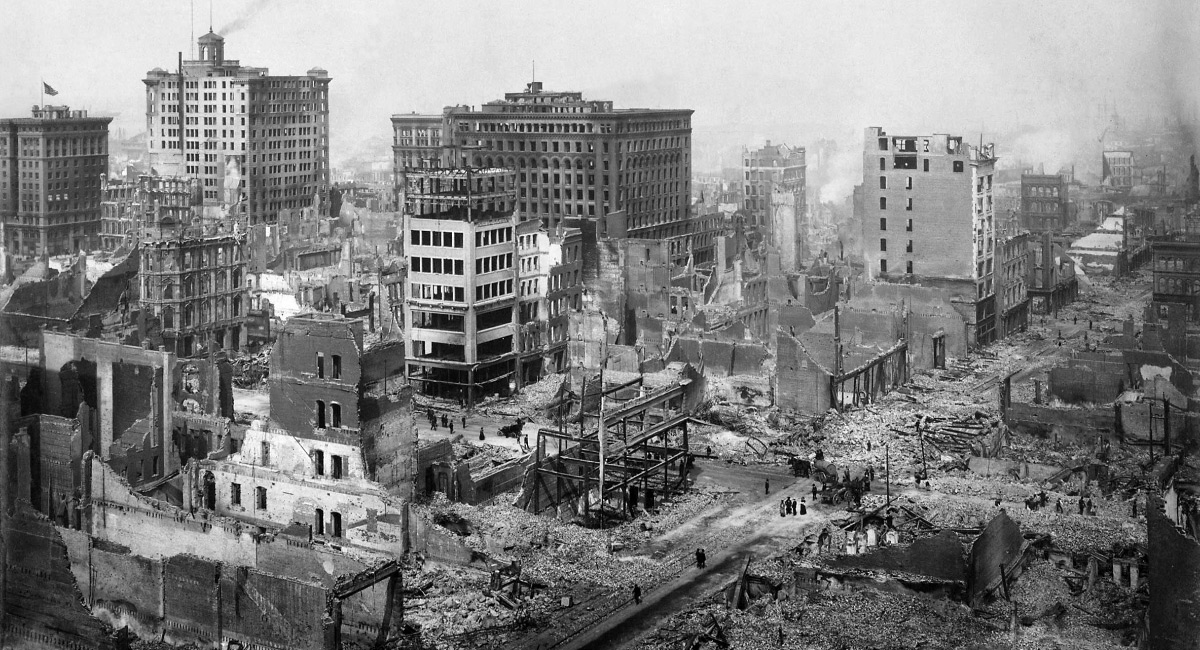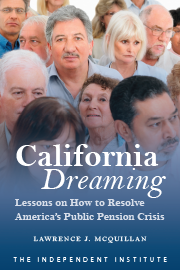Despite much hand-wringing by California politicians over the housing crisis, residential building permits statewide were lower in 2019 than in 2018, according to the most recent figures from the California Department of Finance. To reverse this beyond-discouraging trend, California should look to 1906 San Francisco.
The Great Earthquake and resulting fires destroyed about 28,000 buildings. More than half the city’s 400,000 residents were homeless. But San Francisco quickly rebounded because residents overwhelmingly supported a right to build—the morally correct position—and opposed microplanning by government officials.
Residents rejected an ambitious redesign of San Francisco by famed urban planner Daniel Burnham, which included the world’s largest urban park, sweeping avenues, grand boulevards and radiating thoroughfares in the style of Paris. Instead of this slow, costly plan, according to which the city would have bought large swaths of privately owned land, people rallied around fast and affordable construction rooted in private property rights and the freedom to build what people wanted. It worked.
The earthquake struck on a Wednesday, and by Sunday 300 plumbers were repairing sewers and water pipes. Streetcars were operating on Market Street within weeks. But most impressive, as reported by the San Francisco Chronicle, by 1909, “The city was practically brand new—it had 20,000 buildings erected in three years.” At the current snail’s pace, it would take about eight years to build 20,000 housing units in San Francisco.
California needs to enshrine in its state constitution the spirit of 1906 San Francisco by establishing an individual right to build residential housing. It would be the quickest way to escape the statewide regulatory quagmire that impedes housing development, inflates home and rental prices, and eliminates the bottom rungs of the housing ladder.
Today, abusive environmental lawsuits block housing construction in already developed areas, so-called “infill” areas. Zoning rules discriminate against multifamily structures. Outrageously high and inconsistent “local impact fees” and rigid building codes eradicate low-cost housing for low-income people, worsening homelessness. Notoriously slow permitting causes housing entrepreneurs to flee California and build elsewhere.
Housing development in California involves a bewildering array of stakeholders and layers of government, each effectively with veto power, that has destroyed any notion of private property rights. Landowners who want to develop new housing options are prevented from using their property to quickly and efficiently provide housing in the face of increasing consumer demand. Politicians shamelessly pander to established homeowners and other self-interested groups by restricting the freedom to supply housing for people in need.
The McKinsey Global Institute concluded that California must build housing at least five-times faster than the current rate of 80,000 units each year to eliminate the housing deficit by 2025. This is Gov. Gavin Newsom’s goal. But this objective, more pressing in the wake of the horrific wildfires, is unattainable given the dominant NIMBY (not-in-my-backyard) culture reflected in the Gordian knot of regulatory impediments.
The goal is attainable, however, through a constitutional amendment to establish an individual right to build housing, which would still preserve the ability of local neighbors to negotiate directly with a builder for project modifications or limitations. Although well intentioned, incremental legislative tweaks, such as the endlessly re-worked SB 50, died in the state Senate and could’ve never achieved the desired housing goals. Californians need a bolder alternative rooted in a right to build.
California voters have clarified water rights through the amendment process. It is past time to do the same for property rights related to housing development. A bold constitutional amendment, in the spirit of 1906 San Francisco, would reestablish private property rights in housing development and true local decision-making.
It is immoral to maintain bureaucratic barriers to housing development. Providing a home is never a bad thing, and a constitutional amendment is the way to go.
Entrepreneurs would provide affordable housing quickly if they were allowed to enter California markets and build in the locations and at the price points that consumers want. It worked in 1906 San Francisco, and it can work again across California.










